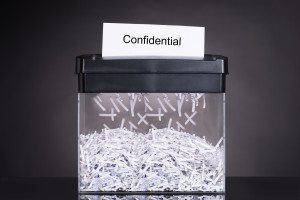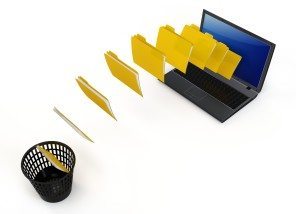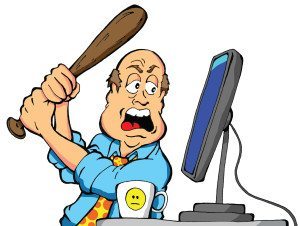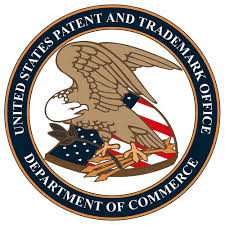 On October 29, 2014, ALJ Thomas B. Pender issued an order in Certain Opaque Polymers (Inv. No. 337-TA-883) granting a default judgment of trade secret misappropriation as a sanction for the respondent’s spoliation of electronic evidence and imposing sanctions of $1.9 million against the respondent and its counsel. The joint liability determination raises troubling legal issues regarding the propriety of joint and several liability between outside counsel and its client where no finding was made that counsel was aware of, or assisted in, the client’s destruction of evidence. The initial determination also raises ethical questions regarding whether, or the extent to which, outside litigation counsel may rely upon the representations of its client concerning the handling of electronic evidence.
On October 29, 2014, ALJ Thomas B. Pender issued an order in Certain Opaque Polymers (Inv. No. 337-TA-883) granting a default judgment of trade secret misappropriation as a sanction for the respondent’s spoliation of electronic evidence and imposing sanctions of $1.9 million against the respondent and its counsel. The joint liability determination raises troubling legal issues regarding the propriety of joint and several liability between outside counsel and its client where no finding was made that counsel was aware of, or assisted in, the client’s destruction of evidence. The initial determination also raises ethical questions regarding whether, or the extent to which, outside litigation counsel may rely upon the representations of its client concerning the handling of electronic evidence.
The investigation at issue was based on a complaint filed on May 20, 2013, by Rohm and Haas Company, Rohm and Haas Chemicals, and The Dow Chemical Company (collectively, “Dow”) alleging violation of Section 337 in the importation into the U.S. and sale of certain opaque polymers that allegedly infringe several patents by Organik Kimya, a company located in Turkey. Finnegan, Henderson, Farabow, Garrett & Dunner represents Organik Kimya.
Initially the complaint focused on claims of patent infringement. On November 7, 2013, ALJ Pender issued an initial determination granting Dow’s request to amend the Complaint and Notice of Investigation to add allegations of trade secret misappropriation. Dow alleged that the respondent hired several of Dow’s key technical personnel, who then allegedly disclosed and used Dow’s trade secrets.
During the investigation, ALJ Pender issued a series of subpoenas, an Ordcr to preserve evidence, and Orders to compel the forensic inspection of certain evidence. In a 119-page Initial Determination (ID), the ALJ concluded that all of these orders were violated by Organik Kimya’s intentional destruction of evidence.
Destruction No. 1 – Dr. Perez Wipes Laptop Clean Just Before Inspection
The ALJ determined documents on the laptop of one of respondent’s employees, Dr. Perez, had been deliberately tampered with and destroyed just prior to forensic examination. ALJ Pender stated that someone managed to overwrite one hundred ninety (190) gigabytes worth of unallocated space on Perez’s laptop’s “C” drive. By doing so, Organik Kimya made it impossible to know the exact volume and content of any previously recoverable data, as the overwritten data was irretrievable. “Hence, there is no question the overwriting of information contained in the unallocated space on Dr. Perez’s hard drive resulting in the destruction of said information is spoliation.”
In addition, while Organik Kimya was overwriting the “unallocated” space, it was manipulating the clock of the computer to alter the metadata on those copies to hide the fact that the copies were being made less than a week before the ordered forensic inspection. The ALJ found the backdating of the computer clock constituted “a purposeful fabrication and material alteration of evidence.”
Further still, the day before a forensic inspection, Organik Kimya ran a program called CCleaner “multiple times to delete a large percentage of the C drive and all of the D drive on Dr. Perez’s laptop.” CCleaner was run on Dr. Perez’s laptop with the option selected to wipe unallocated space. Forensic inspection uncovered over 600,000 files with names matching the naming scheme used by CCleaner to wipe unallocated space. The timestamps for those files show that the files were created and then automatically deleted over the course of several hours starting around 1:45 a.m. on February 27, 2014 and concluding shortly before the forensic specialist arrived to image Dr. Perez’s laptop.
Destruction No. 2 – Mr. Strozzi “Loses” External Media
Following notice of the Dr. Perez destruction, ALJ Pender admonished the parties during a teleconference that he would be “mortally annoyed” if there was any more destruction of evidence or even the suggestion of it. Nonetheless, the forensic inspection of the laptop computer of Mr. Strozzi, another employee of Organik Kimya, revealed that on March 21, 2014, one day after issuance of the Preservation Order, someone deleted over 2,700 files from Strozzi’s laptop. The forensic analysis also revealed dozens of files and folders that had been moved to the Recycle Bin and deleted, but were still recoverable.
Dow also uncovered evidence of at least 20 external storage media devices being connected to this laptop after May 2013. Before Dow learned of the existence of these external storage devices, on March 31, 2014, Strozzi allegedly brought his computer bag, with his laptop and storage devices, into a bathroom of a highway rest stop in Italy and “accidentally” left them there. He further claimed that when he discovered the missing bag he returned to the rest stop but the bag was gone.
 Destruction No. 3 – Dr. Nene Destroys Hard Drive
Destruction No. 3 – Dr. Nene Destroys Hard Drive
On May 3, 2014, during a deposition, Dr. Nene admitted that he removed the hard drive from his personal laptop, took it to his garage, smashed it with a hammer, and threw it in the garbage. Dr. Nene testified that he smashed the hard drive to make sure that the information on the drive could not be recovered. Dr. Nene admitted that in addition to the destruction of his old hard drive, he also found and destroyed a bag full of old zip drives. Dr. Nene testified that he also found a stash of external storage devices, in addition to the zip drives, in his basement and had not turned them over for forensic inspection.
The Default Judgment
Based on the foregoing, the ALJ found that Organik Kimya spoliated, or permitted the spoliation, of massive amounts of evidence prejudicial to Dow’s allegation of trade secret misappropriation in the investigation. Moreover, the spoliation of evidence was undertaken intentionally and in bad faith, Organik Kimya flouted its obligation to preserve evidence, and it undertook great efforts to try and cover up the spoliation
Dow requested the most severe of sanctions– entry of default judgment against Organik Kimya on Dow’s allegation of trade secret misappropriation. The ALJ agreed and held:
On the record before me, Dow hardly can be blamed for taking such a position. Indeed, as exhaustively discussed, supra, Organik Kimya’s willful, bad faith misconduct has ostensibly deprived Dow of its ability to pursue its claim of trade secret misappropriation and me of my ability to oversee a prehearing process that would facilitate a fair and timely resolution of this investigation on its merits. No sanction short of default is available to return the parties to the position in which they would have been but for the deliberate destruction by Organik Kimya of evidence potentially favorable to Dow. Organik Kimya’s bad faith conduct has precluded this action from being decided on the merits.
The Joint and Several Sanctions Order
The ALJ also ordered entry of sanctions “against both counsel for Organik Kimya and Organik Kimya, jointly and severally.” The ITC stated four reasons for the joint and several liability between client and counsel.
First, Organik Kimya is a Turkish chemical company with no significant operations in the United States. Thus a judgment against Organik Kimya for fees and costs would be “difficult” to enforce.
Second, “counsel for Organik Kimya was present in Turkey to oversee the inspection of the Perez company-issued laptop when the spoliation occurred.”
Third, the “explanations in Organik Kimya’s letter of April 4, 2014, for the destruction of evidence on the Perez laptop and the behavior that occurred thereafter to try and cover up the spoliation are not the slightest bit credible on its face. Any diligent effort by counsel to check the veracity of the explanations in that letter before it was filed would have revealed them as false.”
Fourth, “there is no affirmative evidence of record that a litigation hold memo, or equivalent, was issued or disseminated in this investigation. Nor is there evidence that an active undertaking was made to preserve evidence in this investigation.”
The ALJ awarded Dow attorney’s fees of $1,345,707.30 and $598,672.61 in costs.
Propriety of Joint Liability
Whether counsel should be jointly liable for its client’s mischief,under the fact-intensive specifics of this particular investigation, is troubling to say the least. It is especially problematic where no finding was made by the ITC that counsel knowingly participated, encouraged, or aided its client in destroying evidence.
Once litigation commences or is anticipated, counsel should prepare a litigation hold notice. Advice regarding the steps that may be taken are readily available, such as in the attached article. In general, the notice should convey key information including the names of parties involved in the dispute, background on the dispute and likely causes of action, the names of potential witnesses and others who may have relevant evidence and the time frame of potentially relevant evidence. The notice should expressly state that all routines for filing, modifying, deleting and recycling must be suspended. The litigation hold notice should be sent to all individuals who were involved in the events relating to the potential or pending lawsuit or who may be knowledgeable about the relevant issues. After the hold has been implemented, counsel should monitor compliance by, for example, reminding the key players on a regular basis that the hold continues in effect.
The primary reason it appears for holding outside counsel jointly and severally liable for the spoliation attorney’s fees and costs was the absence of evidence of a written litigation hold. It is unclear from the facts whether or to what extent outside counsel advised its client about its preservation duty. What is unique in some ways about this case, however, is that even if counsel had provided the most comprehensive written litigation hold memo ever drafted, no indication exists the client would have respected that agreement. On the contrary, this was not a case where the client simply forgot to or failed to suspend its ordinary retention policy. The lengths to which the client went to lose, to overwrite, or to destroy electronic evidence and media belie the notion that the client would have acted any differently had outside counsel provided and monitored a litigation hold memo. On the contrary, the facts suggest that any “litigation hold” would have been futile.
ALJ Pender’s ruling states, as additional grounds for joint and several liability for sanctions, that Finnegan “was present in Turkey” during document production. But that “finding” alone should not be grounds for counsel’s joint liability. Even if counsel was physically present in Turkey when electronic documents were produced, it is unclear why such presence equates with knowledge that spoliation had occurred — a fact that only was determined after computer expert forensic analysis.
The ruling further posits as grounds for joint and several liability that outside counsel should have been more diligent in uncovering its client’s spoliation of electronic evidence. It is not clear from the ID what counsel, exactly, did or failed to do that was not sufficiently “diligent.” Again, whether counsel “should have” discovered the client’s massive spoliation and coverup requires a fact-intensive analysis, and the public record on this issue is far from clear regarding what counsel knew, what counsel did, or how counsel went about the preservation process. No express finding was made that outside counsel was willfully blind to its client’s intentional deceit and misconduct or that it reasonably could have uncovered its client’s intentional misconduct earlier in the investigation.
The final reason provided for holding counsel jointly liable is the fact that the client is located outside of the United States. Even assuming that it would be difficult to collect the sanctions from the client, whether foreign or domestic, it is unclear why that “fact” can place counsel “on the hook” for monetary sanctions based on the client’s misconduct. Counsel should not be forced into the role of de facto insurer or gurantor of their own client’s financial obligations because the client is not located in the United States.
An alternative to Judge Pender’s joint liability finding would have been to require the client to post a surety bond or other security sufficient to ensure payment of the sanction. A bond should have assuaged any putative concerns about collectability and would avoid the other problems associated with making counsel jointly and severally liable for their client’s wrongdoing.
Apart from the joint and several sanctions, it is conceivable that Organik Kimya’s IP counsel may be exposed to a disciplinary investigation for possible violation of the Rules of Professional Conduct.
One possible ethical issue is whether counsel made material misstatements to the court with knowledge of their falsity. There is precedent at the USPTO’s Office of Enrollment and Discipline for imposing ethical discipline based upon litigation misconduct or sanctions, as our October 5, 2014 post discusses. The key to those cases, however, is a finding that the misconduct was by counsel or with counsel’s knowledge. The initial determination makes no finding that outside counsel had any such knowledge or knowingly made any false statements to the ITC.
Counsel also owes an ethical duty of competence, pursuant to Rule 1.1. Again it is unclear whether, or to what extent, outside counsel, communicated with its client regarding the duty to preserve evidence or monitored the client’s compliance with that duty. Still what is troubling about the possibility of ethical sanctions is that from the ID at least it appears that no reasonable amount of “monitoring” would have uncovered the intentional destruction and efforts to cover up that destruction by the client.
An attorney ordinarily is entitled to rely on the apparent good faith representations of fact by its client. A lawyer is not required to assume his or her client is a liar. Counsel may rely upon the explanations and information provided by the client, even if the lawyer does not personally agree with the explanation or information. While counsel may not remain willfully blind to obvious falsehoods, nothing in the facts suggests that the spoliation of electronic evidence was so obvious and clear that counsel in effect turned a blind eye to avoid learning the truth. On the contrary, the fact that it took the work of computer forensic experts to uncover the client’s wrongdoing supports the conclusion that the misconduct was not obvious.
The Takeaways
The one main problem that led to the joint and several liability sanction was the fact that no evidence was presented regarding a litigation hold memo or similar document. Counsel seeking to avoid imposition of joint liability for sanctions, or possible ethical backlash, would be best served to have documented its efforts at:
1. Advising the client of the client’s preservation duty;
2. Communicating with key players in the client’s organization about their preservation duties;
3. Identifying and taking control of electronic media and evidence as early as possible to avoid or minimize any later efforts by the client of tampering with electronic evidence; and
4. Periodically reminding the client and its key players about their duty to preserve evidence.
Additional disclosure may be required when the client is unsophisticated or unfamiliar with the rules of discovery in the United States.
In sum, whether, or the extent to which, such steps were taken in the ITC investigation is unclear. The more documentation that exists that counsel took reasonable preservation steps, the less likely it will be that counsel will be jointly responsible for the opposing party’s fees or face ethical discipline arising from its client’s intentional spoliation of evidence and cover-up of the client’s destruction of evidence.
